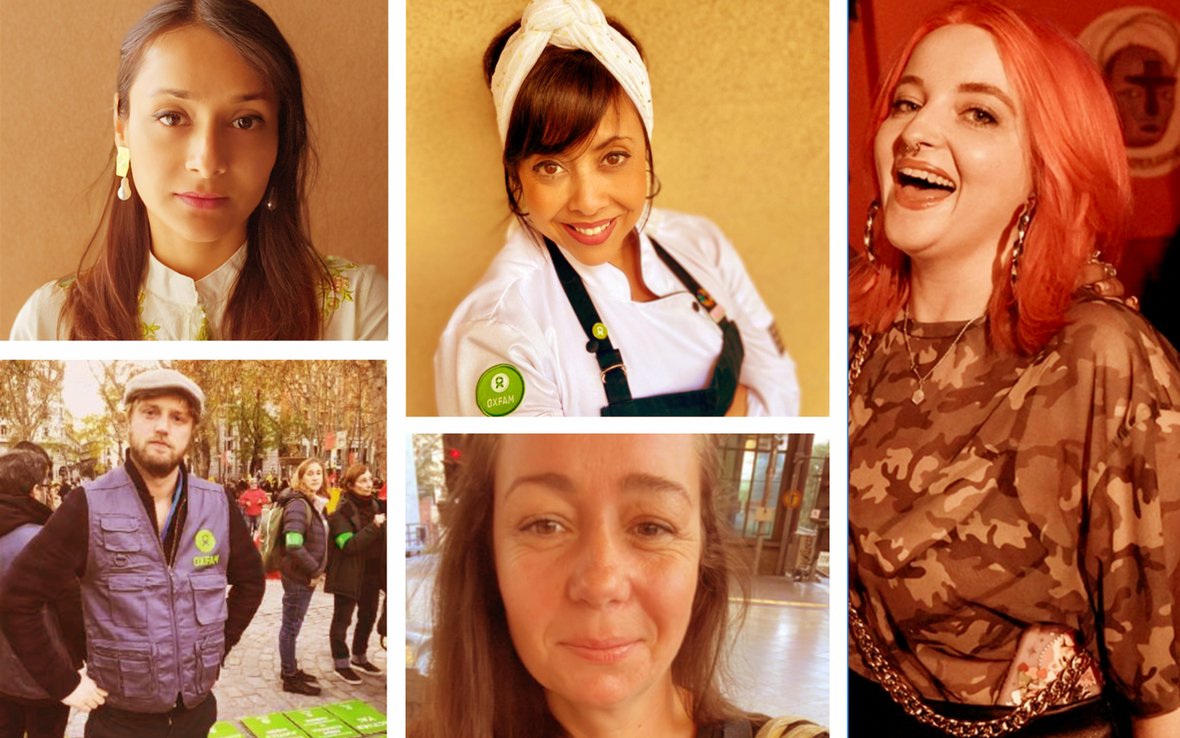The Common Thread with Oxfam staff
We asked Oxfam staff from around the global confederation about how the engage with fashion and sustainability.
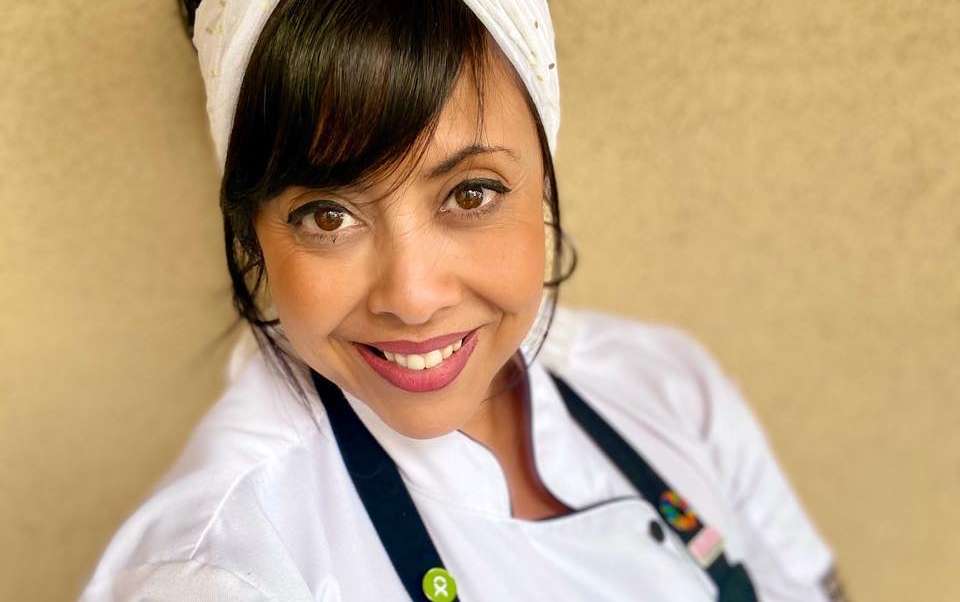
Alejandra Schrader, Senior Philanthropy Officer, Oxfam America
Schrader is an award-winning author, TEDx speaker, food TV personality, certified plant-based nutrition chef, and activist for sustainability and food justice. She is the author of “The Low-Carbon Cookbook and Action Plan: Reduce Food Waste and Combat Climate Change with 140 Sustainable Plant-Based Recipes.” Schrader was also as a Sister on the Planet Ambassador for 13 years.
Q: Why is sustainability important to you personally, and how do you practice it in your daily life?
A: The moment I realized that our actions—big and small—have a direct impact on Mama Earth, I knew I had to become more mindful about my lifestyle choices. I also recognized that I had a responsibility. This awareness came to me early on, while growing up in Caracas, Venezuela. Sustainability has become even more important to me as I’ve come to understand the dire consequences of climate change and its impact on people’s lives—especially marginalized communities. Their health, food security, and livelihoods are all at risk. This mindfulness shows up in various ways in my life—as an individual, a mother, and a cook.
I buy secondhand clothing when possible. (I love the thrill of thrifting—what will I find today!?). I get (and give) clothes and toys for my son through my local Buy Nothing group. I cook in large batches, freeze separate portions of the food, and make sure to consume it (or share it with a neighbor or friend). I practice zero-food-waste principles in my kitchen and find ways to upcycle food scraps that are traditionally thrown away.
Q: What’s one small change you’ve made in your lifestyle (outside of clothing and cooking) to live more sustainably?
A: We’re a one-car family—we decided to get rid of our second car to minimize our carbon footprint (and yes, to save money!). We’re grateful to live in a walkable neighborhood, which makes this easier, but we also use public transit or rideshares when needed. At first, this didn’t feel like a “small change,” but we’ve adapted and now appreciate how it has shaped our choices. It not only promotes a greener planet but also supports our health, since we walk and move more.
Q: What advice would you give someone who wants to start making more sustainable choices, even if their options are limited?
A: Start small and keep an open mind. Don’t let perfect be the enemy of good—every small change can be impactful when part of a collective effort. Living sustainably is contagious! My optimistic self truly believes that.
In Venezuela, we say that every small grain of sand helps build a mountain!
Q: What are some creative ways to use leftover ingredients?
A: I love this question—it's one of my passion topics! (Check out my TEDx Talk: “The Power of Food Waste”). Here's one idea:
Save all your veggie scraps (carrot peels, onion and garlic skins, celery greens, bell pepper cores, etc.) in a large silicone bag in the freezer. Once full, simmer them in a gallon of water for about an hour to make a delicious zero-waste veggie broth. Use it in soups, rice, and more.
The sky’s the limit! Scientific studies are now confirming the nutritional value of food parts we often discard—something our ancestors have known for generations (think corn silk, pineapple skin, papaya seeds). So, finding creative ways to use food waste helps the planet, our health, and our wallets!
Q: What gives you hope when it comes to building a more fair, sustainable, and just future?
A: Having grown up in a low-income country with limited resources, I’ve seen firsthand how inequality and injustice affect lives. As a first-time mother of a toddler, I think about the planet I want to leave for them and future generations. As a queer Afro-Latina, I also understand the fear and vulnerability many people live with today.
So, my work to build a fairer, more equitable, and greener planet is deeply personal. It’s driven by the belief that everyone has the right to exist fully and access basic human needs—regardless of color, race, creed, or socio-economic background.
I also hold onto the hope that we’ll all realize there is no Planet B—and that we’ll take the initiative to make small changes to help mitigate the climate crisis and care for the place we all call home.
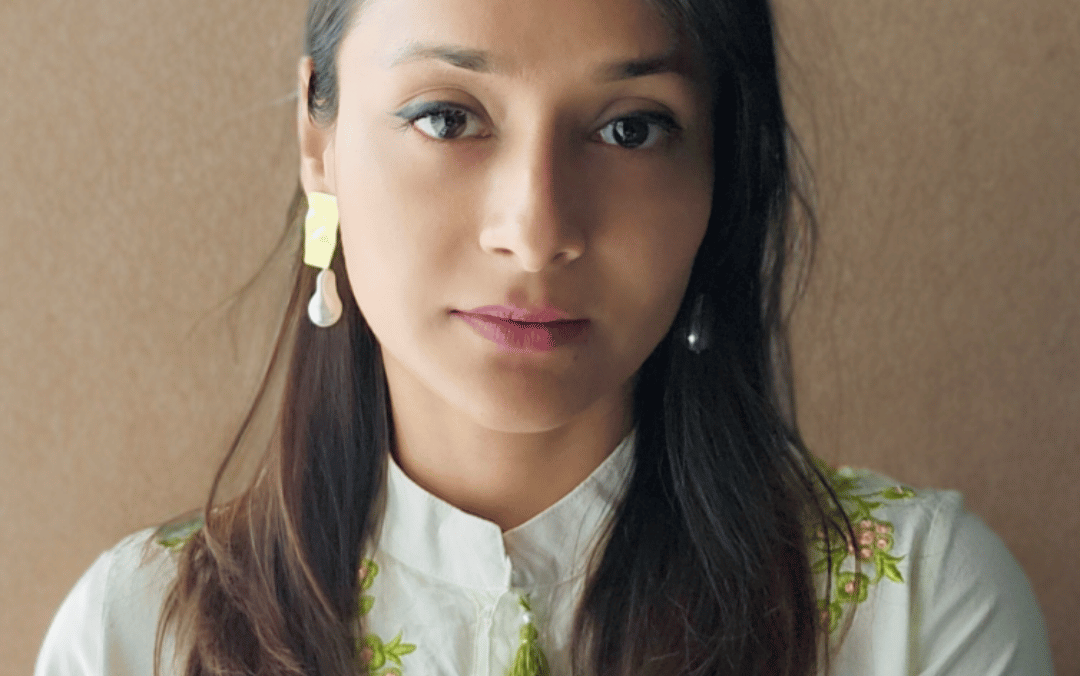
Preyan Choudhuri, Campaigns Specialist, Oxfam Canada
Choudhuri leads campaigns on Climate Justice, Wealth Inequality, and the humanitarian crisis in Gaza. Originally from Dhaka, Bangladesh, she has over a decade of experience in strategic campaigning, supporter engagement, and digital marketing, primarily within the development and non-profit sectors.
Q: Do secondhand, handmade, or upcycled clothes play a role in your fashion choices? If so, how?
A: Today, I still wear my mother’s sharees (or sarees), which she has cherished and cared for decades. I haven’t bought a new sharee in 12 years, and I don’t feel the need to. My mother’s will last me a lifetime. Now, my niece loves wearing my clothes, and my nephew happily accepts my unisex jackets and shirts. Fashion, for me, is about timelessness and craft. When I shop, I look for pieces made to last.
Q: How do cultural traditions or local practices influence sustainable dressing in your country or community?
In Bangladesh, there’s a long tradition of hand-stitched, handwoven, and hand-embroidered clothing made by skilled artisans. Crafts like Jamdani weaving and embroidery are a big part of our culture, and the clothes made this way often become heirlooms. They’re made with such care and quality that they can easily last for generations.
There’s a cultural understanding that clothes have value, not just in how they look, but in how they’re made and how long they last. We’re taught to be careful with our clothes: how we wash them, how we store them, and how we preserve them.
Q: Can you share a favorite piece of clothing that you’ve worn for many years or repaired instead of replacing?
A: Many years ago, I ordered a pair of jeans online from a local seller in Bangladesh. When they arrived, they were several sizes too big and clearly designed for men, hence, extra baggy. But they weren’t expensive and returning them through a courier didn’t feel worth the hassle. So, I got creative. I cut off the bottoms to shorten them and hand-stitched broad white lace around the hems. I wear them with a statement belt, and I get compliments every single time, even from strangers on the street. The nice thing about denim is that wear and tear can look intentional. When threads come loose, I just stitch them back up. I don’t plan on parting with that happy little accident anytime soon.
Q: What’s one small change you’ve made in your lifestyle (outside of clothing) to live more sustainably?
A: I have started paying closer attention to what I eat and the carbon footprint of my food habits. Since then, I’ve kept my food waste close to zero. I plan my meals for the week, check what I already have at home, and make a list before shopping. I’m not an impulsive buyer, so I usually allow myself one or two spontaneous items, and I’m pretty good at sticking to that. I also rarely eat red meat and try to avoid food with excessive plastic packaging.
Q: What advice would you give someone who wants to start making more sustainable choices, even if their options are limited?
A: I’d suggest, when possible, walking or taking public transit when doing groceries or shopping in general. It’s easy to get carried away when we have the comfort and convenience of a car to carry our things for us. But when we have to walk with the weight of what we buy, it becomes easier to drop a few things off the list. And secondly, try to maintain the longevity of your clothes because trends always make a comeback. I mean, who knew wide-legged pants would become all the rage again in 2024?
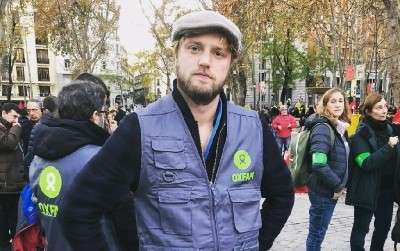
Tim Zijlstra, Campaigner, Campaigns and Influencing, Oxfam Novib
Zijlstra is an experienced campaigner with a demonstrated history of working in the non-profit organization management industry.
Q: Why is sustainability important to you personally, and how do you practice that in your daily life?
A: Sustainability is really important to me. In a world where we overconsume and use more than the planet can give us, it’s important to be responsible in the way you consume. I do this for food to try to have it locally produced and biological and to not buy new clothes but second hand. The same counts for the house I live in where nearly everything inside is secondhand, I love the little cracks and signs of usage.
Q: Do secondhand, handmade, or upcycled clothes play a role in your fashion choices? If so, how?
A: Yes, I mainly buy secondhand clothes. There are so many nice vintage clothing shops these days that there is no reason to buy new anymore. And hopping to different vintage stores is also an adventure, you never know what you will find up front and every piece of clothing is unique.
Q: How do cultural traditions or local practices influence sustainable dressing in your country or community?
A: Vintage shopping is very popular in the Netherlands. While before it was mainly for ‘alternative’ people, it’s getting more mainstream and even in big shopping streets you can find vintage clothing shops now; make it more accessible to the mainstream shopper.
Q: In your view, how does the global fashion industry affect people in your country — whether through secondhand dumping, fast fashion, or manufacturing?
A: People in the Netherlands got used to buying clothes at ridiculously cheap prices due to the global fashion industry. This made people hooked on fast fashion and made it more difficult for people to pay the ‘fair price’ of a product. At the same time, it supports the idea that it’s fine to use something only a few times and then replace it with something new. It makes much more sense in terms of sustainability to buy less clothes, but of better quality so you can use it longer.
Q: What gives you hope when it comes to building a more fair, sustainable, and just future?
A: For me, the climate youth movement gives me hope that the new generation understand better that there are limits to economic growth and the materials our planet can give us. The climate youth movement was really visible and outspoken in the same way the Palestina movement is now. People start to realize that the current status quo is only working with the rich and demanding a system change that put the needs of all people and the planet at the center.

Kitty Edgar, Celebrity and Ambassador Manager, Oxfam GB
Edgar manages high-profile relationships within the organization, educating them on the work of Oxfam and our partners and gathering their support for campaigns.
Q: Do secondhand, handmade, or upcycled clothes play a role in your fashion choices? If so, how?
A: My mum is a designer and a textile artist and learned how to make her own clothes from when she was a kid. So, shopping secondhand or making clothes was part of my upbringing. I very rarely shop new, I have always found it quite boring to have the same style of clothing as everyone else (other than my teenage years where I only wanted skateboard brands even though I did not skateboard). I shop secondhand through charity shops like Oxfam and on apps like Vinted.
Q: Can you share a favorite piece of clothing that you’ve worn for many years or repaired instead of replacing?
A: I love that second-hand items always have a story behind them. My wardrobe is filled with secondhand clothes, but one special item I love to wear is a jumper which used to belong to my auntie. It’s a really gorgeous black cashmere jumper and it’s just very special to me as she unfortunately passed away in 2020, so whenever I wear it, I think of her. She also worked for Oxfam GB in the 1980s in the retail team and then the campaigns team. When moths decided to attack the jumper last winter, my mum very kindly stitched it up and now it’s as good as new.
Q: What’s one small change you’ve made in your lifestyle (outside of clothing) to live more sustainably?
A: I try to use sustainable cleaning products, be mindful of the amount of plastic I use by bringing my own water bottle everywhere and avoid single-use plastic wherever I can. One of the reasons I became a vegetarian is due to learning about the excessive water consumption & deforestation caused by the meat production industry.
Q: What advice would you give someone who wants to start making more sustainable choices, even if their options are limited?
A: Shop your friends' wardrobes, it doesn’t cost you anything (unless you accidentally stain it … which I have done once or twice, but a stain stick is your best friend). Also, ensure you’re donating clothes whenever you can, don’t wait until they are stained or full of holes, try and donate quality items you just don’t wear.
Q: What gives you hope when it comes to building a more fair, sustainable, and just future?
A: Over the last few years, we have seen activist voices being platformed more and more frequently within the climate justice space but also within the fashion space. Seeing them campaign for increased sustainability, equality and calling for those corporations who are polluting to be held accountable gives me hope for the future. In the UK, activists like Q: Mikaela Loach, Tori Tsui, Dominque Palmer, Venetia La Manna, Aja Barber, Brett and Scott Staniland are doing some incredible work.
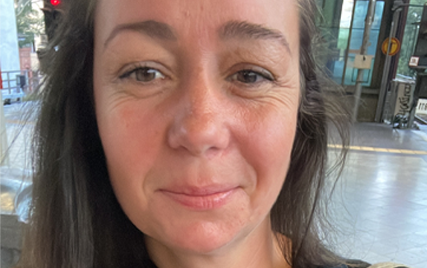
Caroline König, Artist Liaison, Advocacy & Campaigns, Oxfam Germany
König’s focus (and passion) is activism and music. She connects inspiring artists across genres with Oxfam’s political campaigns to drive change.
Q: Why is sustainability important to you personally, and how do you practice that in your daily life?
A: I worry about our planet. I grew up in the 90’s, a blissfully ignorant time. I had no idea where our resources came from or where our trash was going. Today I see the world more and more as a whole, one system. Mine and my country’s contribution as well as damages have an impact. I understand that recycling my plastic bottles will not save the world, but I feel that living by my own principles is a strong choice. Even though it’s exhausting at times. In my daily life:
- I recycle a lot (we have five trashcans).
- A big factor is my kids: We don’t handout cheap plastic toys for our kids’ birthday parties. We try to make decorations ourselves with the kids, which sometimes becomes the best part in the weeks leading up to a celebration. We donate and gift everything we don’t use anymore and get giving almost all the clothes our kids wear. We craft A LOT and use scraps or stuff they collect. They love to work with cardboard boxes.
- We don’t own a car, we go anywhere by bike or public transportation. We try to avoid going somewhere by plane. Our friends are getting married in Vienna this summer, which is like a two-hour flight. We are considering travelling there by night train (11 hours) with our small kids.
- We eat vegetarian/vegan.
Q: Do secondhand, handmade, or upcycled clothes play a role in your fashion choices? If so, how?
A: Almost everything me and my kids wear is secondhand. It’s not a fashion choice. We like to wear “pre-loved” items and try to be part of this new way of consumerism that doesn’t include creating trash and using unnecessary, limited resources.
Q: What role do local markets, informal economies, or community-based solutions play in promoting sustainable fashion where you are?
A: Me and my family try not to order clothes or other things but buy them locally, usually used on eBay. This is easy as my whole town does it, so there is no item I could need that isn’t being sold within a 2km [1.2 miles] radius by a neighbor. We also have groups for parents on Signal within a 2km radius who sell or give kids clothes. I love community-based solutions and am very grateful to live in an area where these things are popular and easily accessible.
Q: What’s one small change you’ve made in your lifestyle (outside of clothing) to live more sustainably?
I became part of the group of parents who take care of our school garden. Having city kids grow food and understand nature is huge to me. The school actually feeds the kids with the food they grew themselves. It’s very empowering. They also have cooking classes.
Q: What advice would you give someone who wants to start making more sustainable choices, even if their options are limited?
A: Every single bit counts because it affects your mindset. Every single choice. And then it’ll grow by itself.
